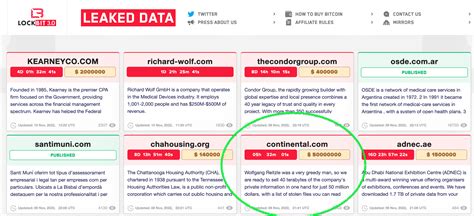The latest chapter in the saga of cyber threats is one that no one saw coming: LockBit, a well-known ransomware group, has audaciously claimed to have exfiltrated a staggering 33TB of data from the US Federal Reserve. While the cybercriminals have set a ransom of $50,000, many experts have raised eyebrows at the veracity of their claims. Given the high-profile nature of the alleged target, skepticism is warranted. The US Federal Reserve, after all, isn’t just any organization – it sits at the pinnacle of global financial systems. This begs the question: could LockBit really have breached such a fortress?
The first red flag is the sheer volume of data claimed to have been exfiltrated. Thirty-three terabytes is an astronomical amount in the realm of cybersecurity breaches, and it raises doubts about the practicalities involved. Commentators like turdistheword point out the disproportion between the magnitude of the breach and the relatively modest ransom. Indeed, $50,000 seems piddly for access to such a trove of potentially sensitive information. Such figures, if proven true, would represent one of the largest and most significant breaches in modern cybersecurity history.
As several comments indicate, skepticism runs deep. One key observation comes from jszymborski, who highlights that experts doubt the credibility of the claims. The astronomical risk for LockBit in making unfounded claims about such a high-profile target would not only damage their already notorious reputation but could invite severe repercussions from federal authorities. As nathanaldensr aptly puts it, the word ‘many’ used in such critical contexts without clear references often suggests an air of possible propaganda. It’s a tactic aiming to bolster the perception of an objective majority without presenting concrete evidence.
If LockBit’s claims are merely a sensational marketing ploy, it would not be the first time that hacking groups have employed such tactics. For instance, commentaries by individuals like colingoodman demand clear evidence supporting the authenticity of such claims, drawing parallels to previous instances where cybercriminals, including the notorious case surrounding Hunter Biden’s laptop, have leveraged media sensationalism. The Hunter Biden laptop controversy saw varied opinions, with some asserting its legitimacy and others claiming a politically motivated hoax. However, when dealing with international cybercriminals rather than domestic political players, the stakes get significantly higher.
Let’s consider for a moment the potential repercussions if LockBit’s claims are true. The Federal Reserve’s role in managing monetary policy, regulating banks, maintaining financial stability, and providing financial services means that a breach could have cascading effects across multiple sectors. As commenters like rtkwe and empathy75 speculate, the breach could include sensitive information about financial transactions, supervisory data, and insider insights into the health of various financial institutions. Such information, if leaked, could destabilize markets and erode trust in the financial system.
However, there’s a silver lining in this cloud of uncertainty. As exabrial and SV_BubbleTime point out, despite the high value of such data, the technical barriers to breaching such a fortified entity are significant. The infrastructure of financial institutions like the Federal Reserve is rarely, if ever, reliant solely on vulnerable systems like Windows servers. Therefore, even though LockBit primarily targets these systems, it seems improbable that they could so easily penetrate the layers of security hardening and controls that an entity like the Federal Reserve would have in place. Therefore, while it may be within the realm of possibility, it remains highly unlikely without substantial external evidence to support such claims.
Moving forward, the Federal Reserve and other significant institutions must reaffirm their defenses against such sophisticated threats. Continuous monitoring, penetration testing, and adopting a zero-trust architecture can significantly reduce vulnerabilities. The hypothetical questions posed by commenters like tmaly and NegativeK about the logistics of data transfer and storage also underscore a critical aspect of modern cybersecurity: attackers need a robust architecture to exfiltrate and handle such data without detection. In conclusion, while LockBit’s claims may have stirred a hornets’ nest, it is crucial to approach such assertions with critical analysis and demand concrete evidence before accepting them at face value.


Leave a Reply